Preface to Lyrical Ballads summary & analysis

William Wordsworth’s “Lyrical Ballads” which was penned in association with S.T Coleridge turned out to be a milestone work in the history of English literature. In his “Preface to Lyrical Ballads” Wordsworth propounds his concept of poetry, the subject and theme of poetry, the purpose and function of poetry, and the language fitted for poetry. Wordsworth’s ideas have changed the outlook of English literature in the 19th century and also announced the romantic period in the true sense.
Table of Contents

Wordsworth’s definition of poetry:
The definition that Wordsworth put forward in 1802 is crucial, he says: “Poetry is the spontaneous overflow of powerful feeling, it takes its origin from emotion recollected in tranquility…” (William Wordsworth, Preface to Lyrical Ballads). From Wordsworth’s definition of poetry, it is comprehensible that poetry is a subject of imagination and motivation. Poetry develops from the passion and emotion of the poet. Poetry’s starting point is the emotions in the heart, not the reason of intellect. The foundational aspects of poetry are passion and emotion. Without these fundamental aspects, good poetry cannot be composed. The insistence on imagination, feeling, passion, and emotion is an explicit withdrawal from the neoclassical emphasis on “ reason ” and “ objectivity ”.
Read More: Romanticism in English Literature
Poetic process:
According to Wordsworth, four stages are needed to complete a poetic process:
- Recollection
- Contemplation
- Renewal of the original emotion, and
- Composition
At the outset, the poet observes certain things, characters, or circumstances. It creates forceful feelings and emotions in the poet’s mind. Then he lets these emotions bog down together with the sensation which it has stirred. After this, in the second stage, there will be recollection or remembrance of those emotions and sensations in tranquility and contemplated upon. There might be a gap of many years between the initial or primary sense of emotions and the contemplation of it. The emotions of the first phase hang in the mind of the poet until the unwanted emotions, which were random and secondary, precipitated. After contemplation, the initial or primary emotions and sensations get purified and filtered and what is left is considered as universal and all-important truth. The primary or initial impression has now been got rid of unneeded material. At this stage, memory plays a crucial role. This whole procedure works very slowly but it is only by way of such a procedure of “purification” that the personal feelings are reformed into the universal.
Read More: Keats as a romantic poet
The emotions that are left after contemplation are different from the emotions that a poet received in the first stage. The word that Wordsworth emphasizes here is “ kindred ”. Wordsworth said that the emotions which are generated at the beginning and the emotions that are created after contemplation are both related but not identical because there is a filtration or purification of emotions. Therefore, at this moment of creation, ‘tranquility’ is no more there. It has been substituted by emotional excitement. The creative process at this stage carries with it pleasure, indeed “an overbalance of pleasure” as Wordsworth puts it. In this process of creativity, the mind is, altogether, in a state of pleasure and delight. The job of the poet is to share this pleasure and delight with his readers to communicate at an elevated level than other men.
Read More: Frankenstein as a gothic novel
The aim and function of poetry:
Wordsworth says that the purpose of poetry is to convey pleasure. But this pleasure is not superficial, trivial enjoyment that we get, for example, by watching rope dancing. Instead Wordsworth wished that with his poetry, he would be able to “ console the afflicted ”. The pleasure of poetry elevates and edifies readers.
The subject matter of poetry:
William Wordsworth states that his content has been events and circumstances from daily life. And he has associated them with a language really used by common man, simultaneously casting over them a shade of imagination. Wordsworth provides certain objectives for his choice of subject matter from common and rural life.
- Human emotions and passions mature well in rustic and rural life.
- The elementary emotions and feelings of the human heart correspond in a state of significant simplicity in the rustic and common situations of life.
- In common and rural conditions of life, human emotions are contained with the pleasing and lasting shape of nature i.e., outer nature, and therefore the emotions are elevated and lasting than those of polished and aristocratic people of cities.
- The attitude and behavior of the rustic people develop from those of elementary passions and feelings, which are more simply comprehensible and more permanent.
In short, Wordsworth’s explanation is that in the rustic and common situations of life “the elementary feelings” from an alliance with nature are unsophisticated, easy to comprehend, and simple.
Read More: Coleridge concept of imagination
Wordsworth’s use of common-man’s language
Wordsworth had used the common people’s language after filtering it of rough expressions, out-of-order syntax, and other flaws. Wordsworth has favored the common man language because common people live together and are always in contact with nature from which the greatest and the best portion of human language originally evolved. In addition, because the humble and rural people have a very low probability of connecting with cities, rustic people do not have a vanity in their language. They convey their sentiment and emotions by way of easy, uncomplicated, and basic expressions. Thus, their language is more intense, more authentic, and more vigorous.
Read More: A Tale of Two Cities as a Historical novel
Wordsworth’s concept of a poet:
Wordsworth says that a poet should be a “man speaking to men ”. The poet’s foremost purpose should be communication. A poet should not write for his own fulfillment and delight but should share his ideas and emotions with his readers. Wordsworth says that the poet is distinct from common living persons not in kind, but in the standard and degree to which he owns certain qualities.
- A poet is a person who has a higher sensibility in contrast to common human beings. A more active sensibility assists him to respond more firmly to outer impressions. Accordingly, his emotions and feelings are more passionate.
- The imaginative power of a poet is greatly higher than that of other ordinary human beings. It allows him to expand his range of emotions. He can experience and react to those feelings that he has not personally confronted.
- The poet possesses a more comprehensive soul compared to other common living persons. He portrays the passions and feelings of other human beings sharply.
The poet, thus, has the gifts of imagination, sensibility, fancy, observation, and judgment. Later William Wordsworth included that a poet should also acquire sincerity as well. By sincerity, Wordsworth intended that the poet should labor hard to revise his poem so as to obtain artistic simplicity and coherence. He should take pains to convey himself in unequivocal terms. Therefore, we can say that Wordsworth was not completely unsighted to the necessity of artistic finish.
Read More: Jane Austen’s art of characterization
Conclusion:
Wordsworth himself applied his own concept of poetic composition to write poetry. Wordsworth never wrote poetry immediately after he came across any sensation or situation. He used to give time to his sensations to bog down his mind, and as he asserts in his theory Wordsworth contemplates those emotions later in tranquility and composes poems. His well-known poems “The Tintern Abbey ,” “ The Solitary Reaper,” “The Daffodils” were written according to his theory of poetic composition.
- Critical Appreciation of Tennyson’s “Break, Break Break”
- Tennyson as a representative poet of Victorian age
- Short note on elegy
- Justify the title Pride and Prejudice
- The use of irony in Austen’s Pride and Prejudice
Leave a Comment Cancel reply
You must be logged in to post a comment.
Preface to Lyrical Ballads
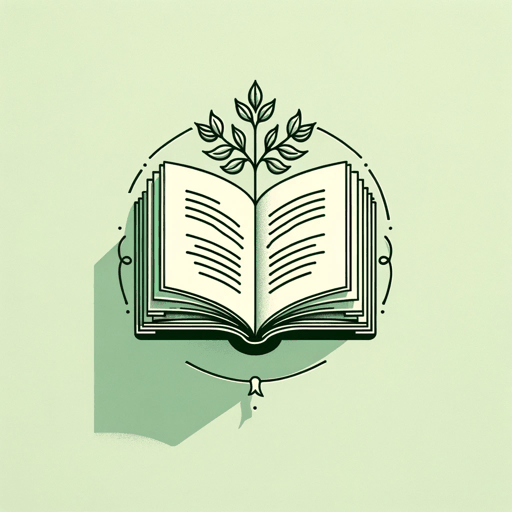
19 pages • 38 minutes read
A modern alternative to SparkNotes and CliffsNotes, SuperSummary offers high-quality Study Guides with detailed chapter summaries and analysis of major themes, characters, and more.
Essay Analysis
Key Figures
Index of Terms
Important Quotes
Essay Topics
Discussion Questions
Summary and Study Guide
Summary: “preface to lyrical ballads”.
“Preface to Lyrical Ballads ” is an essay by the English Romantic poet William Wordsworth . In 1798 Wordsworth wrote, with Samuel Taylor Coleridge, the poetry collection Lyrical Ballads . Believing that the poems were so novel in theme and style that they required some explanation, Wordsworth wrote a prefatory essay to accompany the second edition of the poems in 1800; he then expanded the essay for the third edition of 1802.
The “Preface” is often considered a manifesto of the Romantic movement in English literature. Wordsworth explains his intention in his poems to express incidents from everyday life in everyday language and imbued with poetic sentiment. He defines poetry as a “spontaneous overflow of powerful feelings” (13) and the poet as “a man speaking to men” (8). Because poetry speaks of universal human emotions, it should use diction that is natural rather than artificial and self-consciously literary. Thus, Wordsworth sets himself apart from classicist poets who addressed an elite audience in language that was tied to formal rules. Wordsworth argues that poetry and prose should be close in style and that the aim of poetry should be to imitate nature and inspire emotion in the reader in a way that emphasizes pleasure. In the final part of the essay, Wordsworth outlines the procedure whereby a poet may observe the world around them and compose poetry through deep reflection on their experiences.
Get access to this full Study Guide and much more!
- 8,000+ In-Depth Study Guides
- 4,750+ Quick-Read Plot Summaries
- Downloadable PDFs
This guide refers to the Harvard Classics edition of the “Preface.”

Related Titles
By William Wordsworth
A Complaint

A Slumber Did My Spirit Seal

Composed upon Westminster Bridge, September 3, 1802

I Wandered Lonely as a Cloud
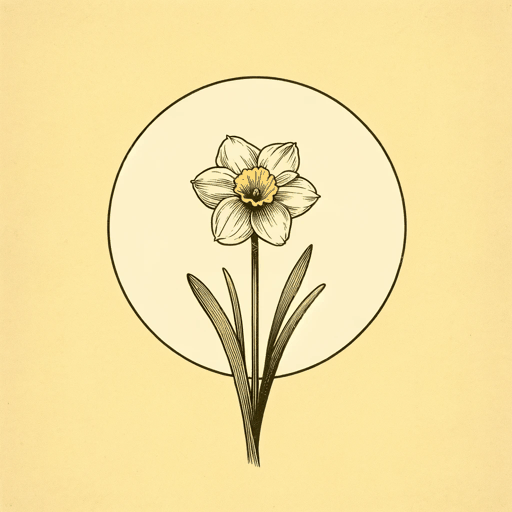
Tintern Abbey
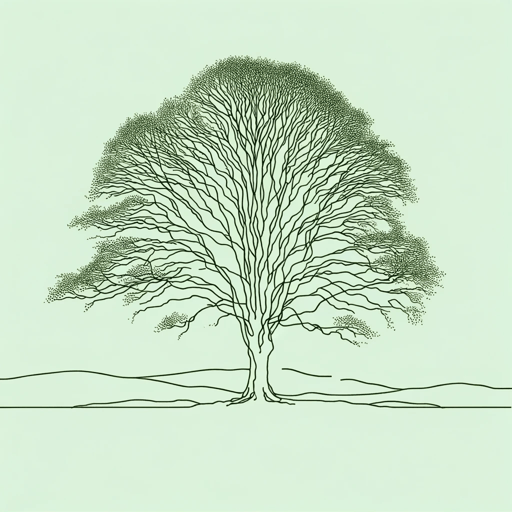
London, 1802
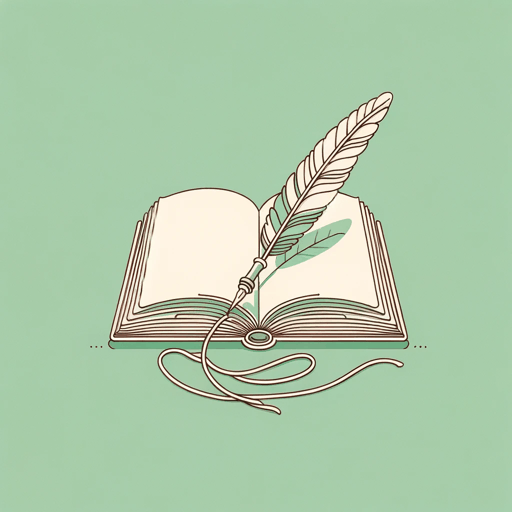
Lyrical Ballads

My Heart Leaps Up

Ode: Intimations of Immortality from Recollections of Early Childhood

She Dwelt Among The Untrodden Ways

She Was a Phantom of Delight
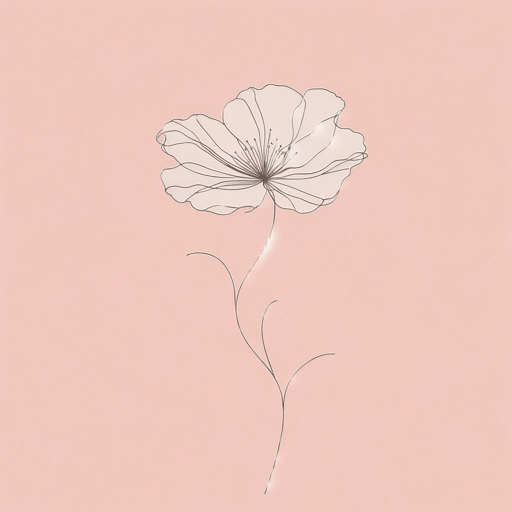
The Prelude
The Solitary Reaper
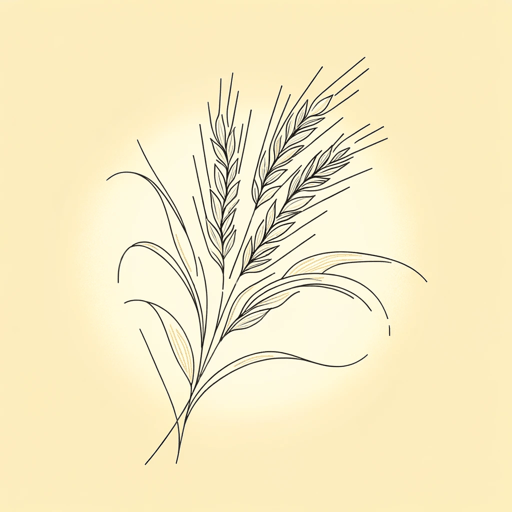
The World Is Too Much with Us

To the Skylark
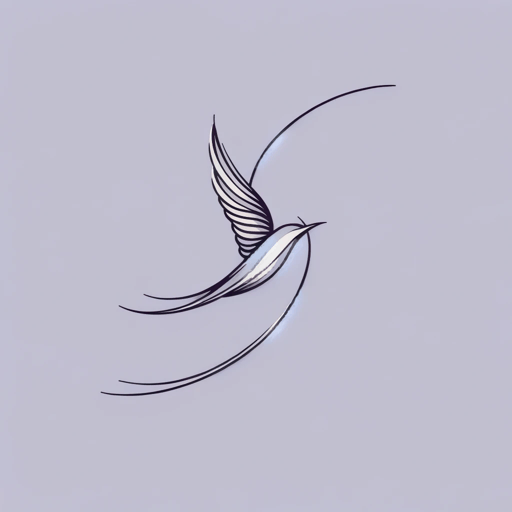
We Are Seven

Featured Collections
View Collection
Books About Art
Books & Literature
Required Reading Lists
Romanticism / Romantic Period
Pardon Our Interruption
As you were browsing something about your browser made us think you were a bot. There are a few reasons this might happen:
- You've disabled JavaScript in your web browser.
- You're a power user moving through this website with super-human speed.
- You've disabled cookies in your web browser.
- A third-party browser plugin, such as Ghostery or NoScript, is preventing JavaScript from running. Additional information is available in this support article .
To regain access, please make sure that cookies and JavaScript are enabled before reloading the page.
We’re fighting to restore access to 500,000+ books in court this week. Join us!
Internet Archive Audio

- This Just In
- Grateful Dead
- Old Time Radio
- 78 RPMs and Cylinder Recordings
- Audio Books & Poetry
- Computers, Technology and Science
- Music, Arts & Culture
- News & Public Affairs
- Spirituality & Religion
- Radio News Archive

- Flickr Commons
- Occupy Wall Street Flickr
- NASA Images
- Solar System Collection
- Ames Research Center

- All Software
- Old School Emulation
- MS-DOS Games
- Historical Software
- Classic PC Games
- Software Library
- Kodi Archive and Support File
- Vintage Software
- CD-ROM Software
- CD-ROM Software Library
- Software Sites
- Tucows Software Library
- Shareware CD-ROMs
- Software Capsules Compilation
- CD-ROM Images
- ZX Spectrum
- DOOM Level CD

- Smithsonian Libraries
- FEDLINK (US)
- Lincoln Collection
- American Libraries
- Canadian Libraries
- Universal Library
- Project Gutenberg
- Children's Library
- Biodiversity Heritage Library
- Books by Language
- Additional Collections

- Prelinger Archives
- Democracy Now!
- Occupy Wall Street
- TV NSA Clip Library
- Animation & Cartoons
- Arts & Music
- Computers & Technology
- Cultural & Academic Films
- Ephemeral Films
- Sports Videos
- Videogame Videos
- Youth Media
Search the history of over 866 billion web pages on the Internet.
Mobile Apps
- Wayback Machine (iOS)
- Wayback Machine (Android)
Browser Extensions
Archive-it subscription.
- Explore the Collections
- Build Collections

Save Page Now
Capture a web page as it appears now for use as a trusted citation in the future.
Please enter a valid web address
- Donate Donate icon An illustration of a heart shape
William Wordsworth's Preface to The Lyrical Ballads
Bookreader item preview, share or embed this item, flag this item for.
- Graphic Violence
- Explicit Sexual Content
- Hate Speech
- Misinformation/Disinformation
- Marketing/Phishing/Advertising
- Misleading/Inaccurate/Missing Metadata
Central to the creative process of the Romantic poets that followed him, Wordsworth’s Preface to the Lyrical Ballads has been both a gift and a thorn in the side of critics for over a century. Readers find themselves drawn back to the essay repeatedly as they seek to untangle the ideas and contradictions within it. The Preface is a statement of Wordsworth’s poetic vision and offers an explanation of the poetic process behind the poems, which fused the rusticity of the ballad form with the psychological introspection of modernity.
But to the generation of Romantic writers that emerged in its wake, the Preface announced a new understanding of the creative process and of the high purposes of poetry: to reveal the human condition, and to awaken in its readers the profoundest emotions and the most enduring truths of existence.
plus-circle Add Review comment Reviews
Download options, in collections.
Uploaded by Aloke Dhar on August 12, 2022
SIMILAR ITEMS (based on metadata)
Preface to Lyrical Ballads (1802 Version)
Preface to lyrical ballads (1802 version) lyrics.
How to Format Lyrics:
- Type out all lyrics, even repeating song parts like the chorus
- Lyrics should be broken down into individual lines
- Use section headers above different song parts like [Verse], [Chorus], etc.
- Use italics ( <i>lyric</i> ) and bold ( <b>lyric</b> ) to distinguish between different vocalists in the same song part
- If you don’t understand a lyric, use [?]
To learn more, check out our transcription guide or visit our transcribers forum

William Wordsworth, not a natural smiler
One of the most famous artist’s manifestos in English literature, Wordsworth’s Preface to Lyrical Ballads (the poetry collection he published jointly with Samuel Taylor Coleridge) contains his statement of intention to return poetic diction to “the real language of men”–i.e., the language of ordinary people.
Find answers to frequently asked questions about the song and explore its deeper meaning
Genius is the world’s biggest collection of song lyrics and musical knowledge

Preface to the Lyrical Ballads
William wordsworth, ask litcharts ai: the answer to your questions.
Romanticism vs. Neoclassicism
The “Preface to the Lyrical Ballads” is, at its core, a manifesto of the Romantic movement. Wordsworth uses this essay to declare the tenets of Romantic poetry, which has distinctly different preoccupations from the Neoclassical poetry of the preceding period. The Neoclassical poets emphasized intellectualism over emotion, society, didacticism, formality, and stylistic rigidity. The last stage of Neoclassicism, before the onset of Romanticism, is known as the Age of Johnson. In this last stage, writers…
Ordinary Life and Everyday Language
Throughout his “Preface to the Lyrical Ballads,” Wordsworth emphasizes the importance of depicting ordinary life using everyday language in a poem. According to Wordsworth, using ordinary life as subject matter allows the poet to better explore human nature and reveal truth. This simple, prose-like language not only corresponds well with ordinary life—it’s closer to the way that normal, everyday people speak—but also is more universally intelligible: its simplicity and honesty create a sense of permanence…
Poetry and Emotions
Emotions are of utmost importance to Wordsworth when it comes to poetry. “For all good poetry is the spontaneous overflow of powerful feelings,” he writes in his “Preface to the Lyrical Ballads.” However, Wordsworth is careful to point out that depicting emotion requires prior thought and acquired skill on the part of the poet. The poet should be able to successfully observe and depict the thoughts and feelings that people have when they are in…
Poetry, Nature, and Humanity
At the beginning of the 19th century, when Wordsworth was writing, England was moving towards industry and urbanity. Wordsworth believed that this sort of fast-paced, crowded lifestyle caused people’s minds to grow numb. Wordsworth wrote not for himself, but for the sake of his contemporaries, whose minds he believed were dull. He felt the need to use the subject of nature in his poetry in order to keep his readers emotionally alive and morally sensitive…
William Wordsworth's Preface to the Lyrical Ballads
- September 2023

- Maharaja Krishnakumarsinhji Bhavnagar University
Discover the world's research
- 25+ million members
- 160+ million publication pages
- 2.3+ billion citations
- Arnold Isenberg
- M. H. Abrams
- J. A. Cuddon
- 21235-21240
- Alun R Jones
- William Tydeman
- Recruit researchers
- Join for free
- Login Email Tip: Most researchers use their institutional email address as their ResearchGate login Password Forgot password? Keep me logged in Log in or Continue with Google Welcome back! Please log in. Email · Hint Tip: Most researchers use their institutional email address as their ResearchGate login Password Forgot password? Keep me logged in Log in or Continue with Google No account? Sign up
Academia.edu no longer supports Internet Explorer.
To browse Academia.edu and the wider internet faster and more securely, please take a few seconds to upgrade your browser .
Enter the email address you signed up with and we'll email you a reset link.
- We're Hiring!
- Help Center

WORDSWORTH’S THEORY OF POETRY IN THE LYRICAL BALLADS

The paper deals with Wordsworth's Theory of Poetry.
Related Papers
IASET Publications
This Research paper attempt to elaborate the literary contribution of William Wordsworth in Romanticism. The aim of this paper is to show the literary contribution of William Wordsworth in English Romantic poetry of 19th century and the brief discussion on what is romanticism. William Wordsworth is known as the master of romantic poetry. According to him romanticism is depictions of emotions, personifying human life with nature, and propagation of a way of living which called everyone back to nature. He believes that individual can best understand themselves and their world when they are isolated from it, apart from it. 'Romanticism is an important literary movement which began in west Europe during 17th century against Neoclassical, the age preceding the Romantic Movement. The Neoclassical age was also called the 'The Age of Enlightenment', which focused on reason, logic and scientific facts. Romanticism saw the birth of new genre of poetry ,which glorify the delicacy and beauty of nature , emotions, and past, imagination , which was later christened as the 'Romantic poetry'. The 'Romantic Age' was defined as the period between the late 1780s and 1790s and the 1850s. The famous poets, apart from William Wordsworth, of the Romantic age include Samuel Taylor Coleridge, john Keats, Percy Shelley etc. The first instance of 'Romantic poetry' as a distinct genre dates from 1798, when William Wordsworth and Samuel Taylor Coleridge published their famous collection of poetry named 'Lyrical Ballads'. From then until the 1850s, the genre enjoyed a flamboyant reign, and a number of great poets emerged, William Wordsworth is still the most wellknow of them all.
Douglas Scott Berman
This essay attempts to demonstrate the Preface to Lyrical Ballads‟ critical and historical relevance, first, by considering its historical reception, and second, by reconsidering one of the key concepts of the Preface, the notion of the “real,” within the larger context of this reception. During his lifetime, Wordsworth was considered in two different respects: one, as the poet of simple ballads; the other, as the speculative, inwardly driven poet of The Excursion. I argue that this second model, expounded first by Coleridge in Biographia Literaria, has influenced such major critics as Hartman, Pottle, and Bloom, particularly in their interpretations of Wordsworth‟s early career. By considering the “other” Wordsworth, the Wordsworth of the Preface, the dialectic can be historically resituated. Ultimately, I wish to rethink the Preface by importing the idea of philosophy into what has hitherto been considered to be not a philosophical work.
Keith Hanley
Laura Damone
In his preface to the 1800 Edition of Lyrical Ballads , William Wordsworth argued powerfully that the language of poetry is not, and cannot be, distinct from that of common prose. And yet, while Wordsworth’s choice of vocabulary, tone and subject matter in this collection was prosaic to the point of being revolutionary, one primary distinction between poetry and prose was left untouched: the meter. This paper explores the seeming contradiction between Wordsworth’s assertion in his preface and his strict adherence to the laws of poetic meter within the collection. I argue that this contradiction is intentional, and in proposing it, Wordsworth pushes his reader to adopt a characteristically Romantic vision of the state of humanity and its relationship to poetry: in an industrialized society, our state is one of perpetual tension between the essential and the artificial. It is this dynamic tension between freedom and constraint that metric verse is intended to exemplify. By juxtaposing...
sukeshi kamra
Wordsworth was of the view that ‘Poetry is spontaneous overflow of powerful feelings. When reading this statement, one might think that, for Wordsworth, poetic composition is solely based on the expression of emotions, excluding any reflection about them. But Wordsworth gave equal importance to the element of thought in poetry and says that poems to which any value is attached were never produced on any variety of subjects but by a man who being possessed of more than usual organic sensibility, has also thought long and deep. Wordsworth believes that artistic process is combination of thought and emotion. This research article will study Wordsworth’s concept of poetic creation Wordsworth believes that artistic process is combination of thought and emotion . During the poetic process, the poet is possessed by powerful passions but he undergoes a period of emotions reflected in tranquility. During this process the influxes of feelings are modified and directed by thoughts. The directi...
Peter M Hofstee
Chokri Zwari
International Res Jour Managt Socio Human
Wordsworth a British Poet credited with ushering in the English Romantic Movement with the publication of Lyrical Ballads (1798) in collaboration with Samuel Taylor Coleridge. The magnificent landscape deeply affected Wordsworth's imagination and gave him a love of nature. He lost his mother when he was eight and five years later his father. The domestic problems separated Wordsworth from his beloved and neurotic sister Dorothy, who was a very important person in his life. Wordsworth made his debut as a writer in 1787, when he published a sonnet in The European Magazine. To Wordsworth, "Poetry is the spontaneous overflow of powerful feelings; it takes its origin from emotion recollected in tranquility; the emotion is contemplated till, by a species of reaction, the tranquility gradually disappears, and an emotion, kindred to that which was before the subject of contemplation, is gradually produced, and does itself actually exist in the mind. In this mood successful composition generally begins, and in a mood similar to this it is carried on."
The Wordsworth Circle
Julie Camarda
At the heart of Lyrical Ballads's 1798 edition, and in the middle of the 1800 edition's first volume, lies one of William Wordsworth's cleverest traps. It may actually be too clever for its own good, or at least its own reception. "The Thorn" was poorly reviewed upon its initial publication and has continued to pose problems for readers in the present day. Some of Lyrical Ballads's first reviewers did not disapprove of the volume's turn to "simplicity," but when it came to "The Thorn," Robert Southey offered a characteristic, albeit more personal, criticism: "The author should have recollected that he who personates tiresome loquacity, becomes tiresome himself" (200). 1 Modern readers have inherited Southey's frustration with a speaker who says too much and too little. Indeed, what remains unspoken has proven an almost indissoluble problem for critics. And given his irritating "longwindedness" (Gamer 115), reticence on the speaker's part should, it seems, not be an issue. Nevertheless, critics continually seek to explain or rescue the speaker's investment in telling versus knowing. Andrew Bennett calls the poem's fixation on parsing telling from "knowing" endemic to Lyrical Ballads's broader "poetics of ignorance" (28); similarly, in her critical overview of the poem's reception, Frances Ferguson has addressed readers' focus upon the speaker's "indirection" and "obtuseness" when it comes to telling tales, for he seems unable to recognize the difference between talking to audiences rather than "at" them ("Writing" 131). And, as Don Bialostosky ventures-unlike Karen Swann, who attends to the speaker's "belatedness" and the poem's "unsettling temporal logic" (Swann 66), aspects not
Loading Preview
Sorry, preview is currently unavailable. You can download the paper by clicking the button above.
RELATED PAPERS
Ramkrishna Bhattacharya
Heidi Thomson
Wayne Chapman
Dr Manoj Nanda
Goldenline Magazine
Asish K R . Charan
Ichiro Koguchi
Studia Romanica Et Anglica Zagrabiensia
Martina Domines Veliki
The Bars Review
Helga Schwalm
Sadia Safdar Khan
THINK INDIA JOURNAL
Dr Sunil K MISHRA , JAIVINDER SINGH
peter simonsen
Fictional Worlds and Philosophical Reflections, Ed. Garry Hagberg
Katherine Elkins
Othman A Marzoog
Maram El jam
RESEARCH SCHOLAR
Kaushik N . Bhuyan
Reena Mittal
Edupedia Publications
Littera Aperta 6 (2018), 5-28
International Journal Littera Aperta
International Journal of Basic and Applied Sciences
Zahida Batool
Haneen Shubib
The Spring Magazine
Shouvik N Hore
RELATED TOPICS
- We're Hiring!
- Help Center
- Find new research papers in:
- Health Sciences
- Earth Sciences
- Cognitive Science
- Mathematics
- Computer Science
- Academia ©2024

COMMENTS
Analysis. Wordsworth explains that the first edition of Lyrical Ballads was published as a sort of experiment to test the public reception of poems that use "the real language of men in a state of vivid sensation.". The experiment was successful, better than Wordsworth was expecting, and many were pleased with the poems.
Historical Context of Preface to the Lyrical Ballads. Wordsworth wrote the "Preface to the Lyrical Ballads" during a time where England was experiencing profound urbanization, industrialization, and movement towards mass media and mass culture. In the essay, Wordsworth expresses fear that these factors can lead human minds to become dull ...
Preface to Lyrical Ballads summary & analysis. March 19, 2022 by Shyam. William Wordsworth's "Lyrical Ballads" which was penned in association with S.T Coleridge turned out to be a milestone work in the history of English literature. In his "Preface to Lyrical Ballads" Wordsworth propounds his concept of poetry, the subject and theme ...
Analysis: "Preface to Lyrical Ballads". Wordsworth opens his essay by acknowledging the recent publication of his collection of poems Lyrical Ballads. He had anticipated, correctly, that the book would divide the public into those who loved the poems and those who hated them; his only surprise has been that even more people have liked the ...
Lyrical Ballads is a collection of poetry by William Wordsworth and Samuel Taylor Coleridge that was originally published in 1798. Wordsworth's preface to this collection was composed for its ...
Analysis. Last Updated September 5, 2023. In order to better understand the views Wordsworth expresses in his preface to Lyrical Ballads, it is helpful to be familiar with Wordsworth's long ...
Summary: "Preface to Lyrical Ballads". "Preface to Lyrical Ballads " is an essay by the English Romantic poet William Wordsworth. In 1798 Wordsworth wrote, with Samuel Taylor Coleridge, the poetry collection Lyrical Ballads. Believing that the poems were so novel in theme and style that they required some explanation, Wordsworth wrote a ...
Essays and criticism on William Wordsworth and Samuel Taylor Coleridge Lyrical Ballads - Critical Essays. ... in the "Preface" to the 1800 edition of Lyrical Ballads constitute a key primary ...
Over the years, Wordsworth 's "Preface to the Lyrical Ballads" has come to be seen as a manifesto for the Romantic movement in England. In it, Wordsworth explains why he wrote his experimental ballads the way he did. Unlike the highbrow poetry of his contemporaries, the late-Neoclassical writers, Wordsworth's poems in Lyrical Ballads engage with the lives of the peasantry and are ...
Wordsworth's reliance on unaffected speech and action and his deep conviction that simplicity of living was a philosophy harmoniously in agreement with nature wrought a revolution in poetic values. His Preface to the Lyrical Ballads became the symbol and the instrument of romantic revolt. Wordsworth's philosophy of life, his theory of poetry ...
While artful shades thy downy couch enclose, And soft solicitation courts repose, Amidst the drowsy charms of dull delight, Year chases year with unremitted flight, Till Want now following, fraudulent and slow, Shall spring to seize thee, like an ambush'd foe. 5. From this hubbub of words pass to the original.
Lyrical Ballads. The Preface to Lyrical Ballads is an essay, composed by William Wordsworth, for the second edition published in 1800 of the poetry collection Lyrical Ballads, and then greatly expanded in the third edition of 1802. It came to be seen as a de facto manifesto of the Romantic movement.
Central to the creative process of the Romantic poets that followed him, Wordsworth's Preface to the Lyrical Ballads has been both a gift and a thorn in the side of critics for over a century. Readers find themselves drawn back to the essay repeatedly as they seek to untangle the ideas and contradictions within it. The Preface is a statement ...
Preface to Lyrical Ballads (1802 Version) Lyrics. The first Volume of these Poems has already been submitted to general perusal. It was published, as an experiment, which, I hoped, might be of ...
3. At its publication, Lyrical Ballads was bitterly attacked in the more conservative periodicals. Nevertheless, it sold well enough to call for a second printing in 1800. The 1800 edition contains the epoch-making "Preface" written by Wordsworth. 4. Wordsworth's essay has become one of the most famous pieces of literary
Discussion of themes and motifs in William Wordsworth's Preface to Lyrical Ballads. eNotes critical analyses help you gain a deeper understanding of Preface to Lyrical Ballads so you can excel on ...
It should, perhaps, not be forgotten that Wordsworth 'never. cared a straw about the theory'1 with which Coleridge urged him to. preface the second edition of The Lyrical Ballads . And while it is. highly unlikely that the 'substance' as well as the idea could be truly. attributed to Coleridge,2 it seems that the latter's theoretical mind.
The "Preface to the Lyrical Ballads" is, at its core, a manifesto of the Romantic movement. Wordsworth uses this essay to declare the tenets of Romantic poetry, which has distinctly different preoccupations from the Neoclassical poetry of the preceding period. The Neoclassical poets emphasized intellectualism over emotion, society, didacticism, formality, and stylistic rigidity.
Please summarize Topic IV from Thomas Pfau's critical essay on Wordsworth's Preface to Lyrical Ballads. Pfau articulates the main point of Section 4, which is also his concluding argument for the ...
In William W ordsworth' s famed attack on the neo-classical. doctrine of a special language for poetry ,in his preface to 1800 Lyrical Ballads, he claimed: "There is no. difference between ...
Preface to Lyrical Ballads William Wordsworth (1800) THE FIRST volume of these Poems has already been submitted to general perusal. It was published, as an experiment, which, I hoped, might be of some use to ascertain, how far, by fitting to metrical arrangement a selection of the real language of men in a state of vivid sensation, that
This essay attempts to demonstrate the Preface to Lyrical Ballads‟ critical and historical relevance, first, by considering its historical reception, and second, by reconsidering one of the key concepts of the Preface, the notion of the "real," within the larger context of this reception.